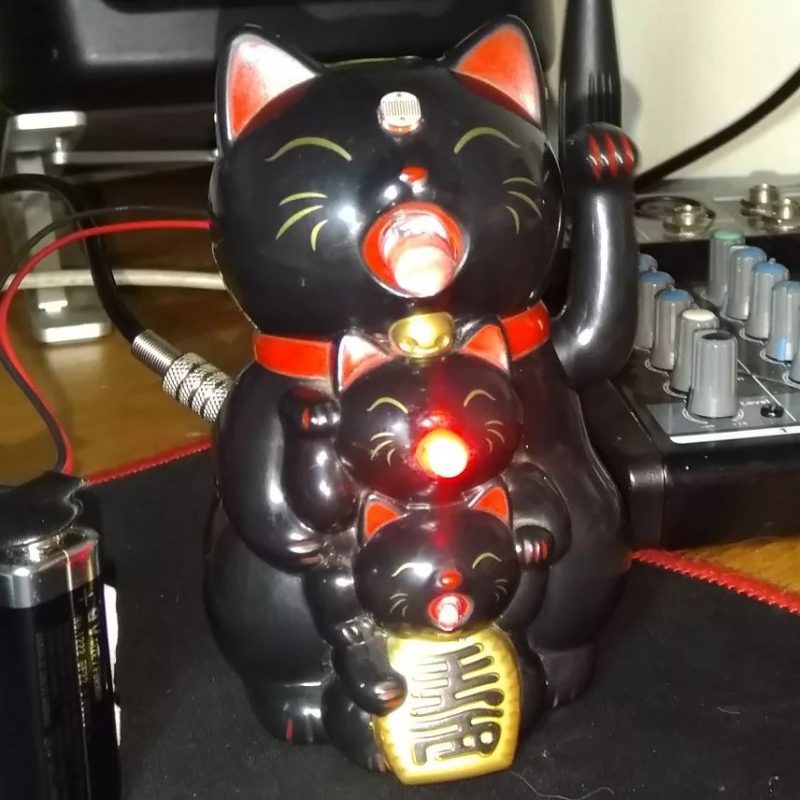
 “He wrote me that in the suburbs of Tokyo there is a temple consecrated to cats. I wish I could convey to you the simplicity—the lack of affectation—of this couple who had come to place an inscribed wooden slat in the cat cemetery so their cat Tora would be protected. No she wasn’t dead, only run away. But on the day of her death no one would know how to pray for her, how to intercede with death so that he would call her by her right name. So they had to come there, both of them, under the rain, to perform the rite that would repair the web of time where it had been broken.”
“He wrote me that in the suburbs of Tokyo there is a temple consecrated to cats. I wish I could convey to you the simplicity—the lack of affectation—of this couple who had come to place an inscribed wooden slat in the cat cemetery so their cat Tora would be protected. No she wasn’t dead, only run away. But on the day of her death no one would know how to pray for her, how to intercede with death so that he would call her by her right name. So they had to come there, both of them, under the rain, to perform the rite that would repair the web of time where it had been broken.”
I remembered this scene from Chris Marker’s film Sans Soleil of the temple in the suburbs of Tokyo that was dedicated to cats, and when I knew that I was in fact going to be in Tokyo for a couple of days, I decided I would find this temple. It is in fact the Gotoku-ji Temple in the Setagaya ward in the western suburbs of Tokyo.
It really was tucked away in a relatively quiet residential neighborhood, easily missed if one did not know where to find the gate. The temple grounds were very quiet, with very few visitors other than myself.


[click to enlarge]
There is a small building near the large tower in the photo above. I believe it is a side temple of sorts. Behind it is a set of shelves containing hundreds of maneki nekos, or beckoning cats, left as offerings. Indeed, Gotoku-ji claims to be the birthplace of the popular cat figurines.



[click to enlarge]
This was definitely the temple from Sans Soleil, I had succeeded in finding it. And having come this far, I spent a little time to linger in this small, quiet place.
Gotoku-ji is not the only site that claims to be the birthplace of the maneki neko. In Akasuka, not far from the famed Senso-ji temple, is the Imado Shrine.
Like Gotoku-ji, the shrine was tucked away in an alley in a quiet residential neighborhood. It was quite small, but had enough space for gardens, trees and statues leading up to the main building:

[click to enlarge]
Inside on the altar is a pair of large cats:

The one on the left has spots and is the male cat, while the one on the right is the female cat, and together the lucky cats of Imado are supposed bring good fortune to couples or those seeking love. Images of the pair of cats can be found throughout the shrine:


[click to enlarge]
The wooden plaques tied below the image of the cats contain wishes left by visitors. This is a common practice at temples and shrines, but it was specifically here that I chose to leave such a wish myself. Another common practice is selecting a fortune from a box near the shrine – at the Imado temple, each fortune comes with a tiny cat figure. I did get one of these, and of course a few ceramic cats from both Imado and Gotoku-ji.
One cannot help but think a little bit about spiritual things after visiting spiritual places, and a coincidence that occurred soon after leaving Imado contributed. Heading back south towards the Senso-ji temple, I saw a small narrow park, really a stone path lined with trees, and decided to walk in that direction. About halfway, a saw a woman with an open cat carrier, and inside was a black cat with green eyes!

[click to enlarge]
Although we had almost no words in common except basic greetings and “neko”, I was able to express my appreciation of her cat, and showed photos of Luna. “Lady?”, she asked in English. I nodded. She pointed to her own cat and smiled “Boy!”
The symbol of the cat is ubiquitous in Tokyo, spiritually as well as commercially:


[click to enlarge]
In the image above, we see a shop carrying not only an impressive array of maneki neko, but some examples of Japan’s other famous feline symbol, Hello Kitty. I have approximately zero interest in Hello Kitty, but during my trip I did build up a small collection of maneki neko, of which a subset are shown below:

Included are one of the simple ceramics from Gotoku-ji, the tiny cat that came with the fortune at Imado, and a couple of black cats that I found.
Beyond the black cat in the park, I did not see very many live cats during my short visit. Apparently, this is an issue from Japanese ailurophiles as well. There are now several cat cafes around Tokyo, where for a fee one can spend an hour or so interacting with the cafe’s very friendly (and very clean) cats. I did see a cat cafe in Akiabara (an area which will be the focus of one of our next articles), but I did not have time to check it out. However, Akiabara, the center of electronics and anime in Tokyo, will itself be the topic of an upcoming article here at CatSynth.




























